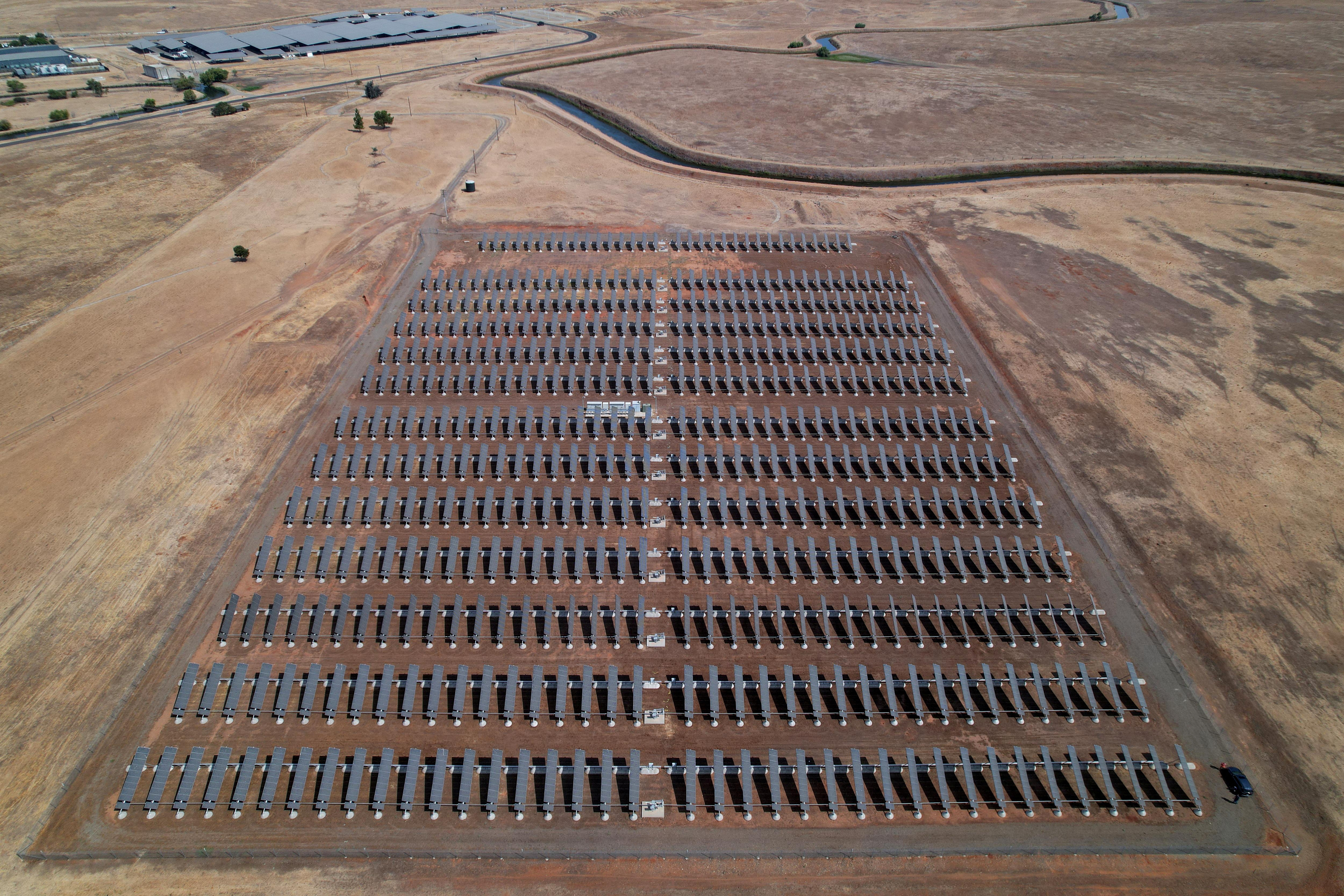
LITTLETON, Colorado, May 24 (Reuters) – Solar farms generated less than 6% of the electricity produced by utilities in the United States in 2023, but that annual share vastly understates the critical role that solar plays in enabling power firms to accelerate energy transition efforts.
On a day-to-day basis, solar plants can have such disruptive influence on system electricity flows that utilities have been forced to develop capabilities to rapidly curtail output from other sources and store surplus power for later use.
In turn, that resulting agility and emerging ingenuity throughout the energy sector is helping to accelerate global energy transition efforts by forcing power systems to more efficiently accommodate large swings in clean power output.
With supplies of all forms of renewable energy set to rapidly grow, utilities that learn to maximise the volume of solar power within generation systems today will be best placed to help drive the further evolution of energy systems in the decades ahead.
CLEANER, BUT MORE VOLATILE
No other clean power source comes close to creating both the opportunities and challenges that rapidly expanding supplies of solar power entail.


The state also accounts for around 25% of national electricity supplies generated from solar.
But it’s an enduring challenge to turn the state’s abundant sunshine into useable electricity without distorting power markets.
As more and more solar plants were connected to California’s grid over the past decade, power prices in the state came under increasing pressure during the middle of the day when solar output peaks.
A compounding problem is that the peak solar production period overlaps with what is traditionally the lowest period for system demand, so power firms have been forced to lower power prices in order to balance system needs until solar output declines later in the day.
The resulting ‘Duck Curve’ shape of power prices became a well known phenomenon over the last few years, with the unintended distortion to market dynamics caused by surplus solar power widely lampooned in 2023 by opponents of the energy transition.

The volume of California’s solar output has increased further so far in 2024, with solar electricity generation through May 23 running 27% ahead of the same period in 2023, according to LSEG data.
The uneven distribution of this output causes daily contortions to the state’s power generation mix, with solar power accounting for 0% of power generation before sunrise to over 70% during the sunniest times of day.

And California’s power prices continue to come under severe pressure during peak solar production hours, routinely turning negative for spells as the market pricing mechanism tries to lure demand and deter production from other sources.

BATTERY BUTTRESS
To alleviate the impact of the system imbalance caused by runaway solar output, California’s utilities have deployed networks of utility-scale batteries that can absorb surplus power during peak solar production periods, to be discharged when the sun goes down.
The battery network is still being built out, but already accounts for around 20% of California’s system needs during the peak demand period just after solar output stops and when people returning from work crank up household electricity demand.

The batteries also reduce the need for power imports by California during those peak demand periods, which reduces regional power strain and helps California become less reliant on neighbouring states for power supplies.
California’s battery system also acts as a learning tool for other power networks who are also struggling with the impact of too much solar supply, too soon.
And along with wider use of smart energy meters – which encourage consumers to increase power consumption when supplies are most abundant – all U.S. utilities are learning key ways to accommodate rapid growth in solar output and set themselves up for further energy transition progress.
The opinions expressed here are those of the author, a columnist for Reuters.
The Reuters Power Up newsletter provides everything you need to know about the global energy industry. Sign up here.
Reporting by Gavin Maguire; Editing by Marguerita Choy
Share This:




 CDN NEWS |
CDN NEWS |  US NEWS
US NEWS 





























COMMENTARY: Where the Fight Against Energy Subsidies Stands – Alex Epstein